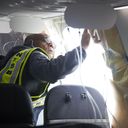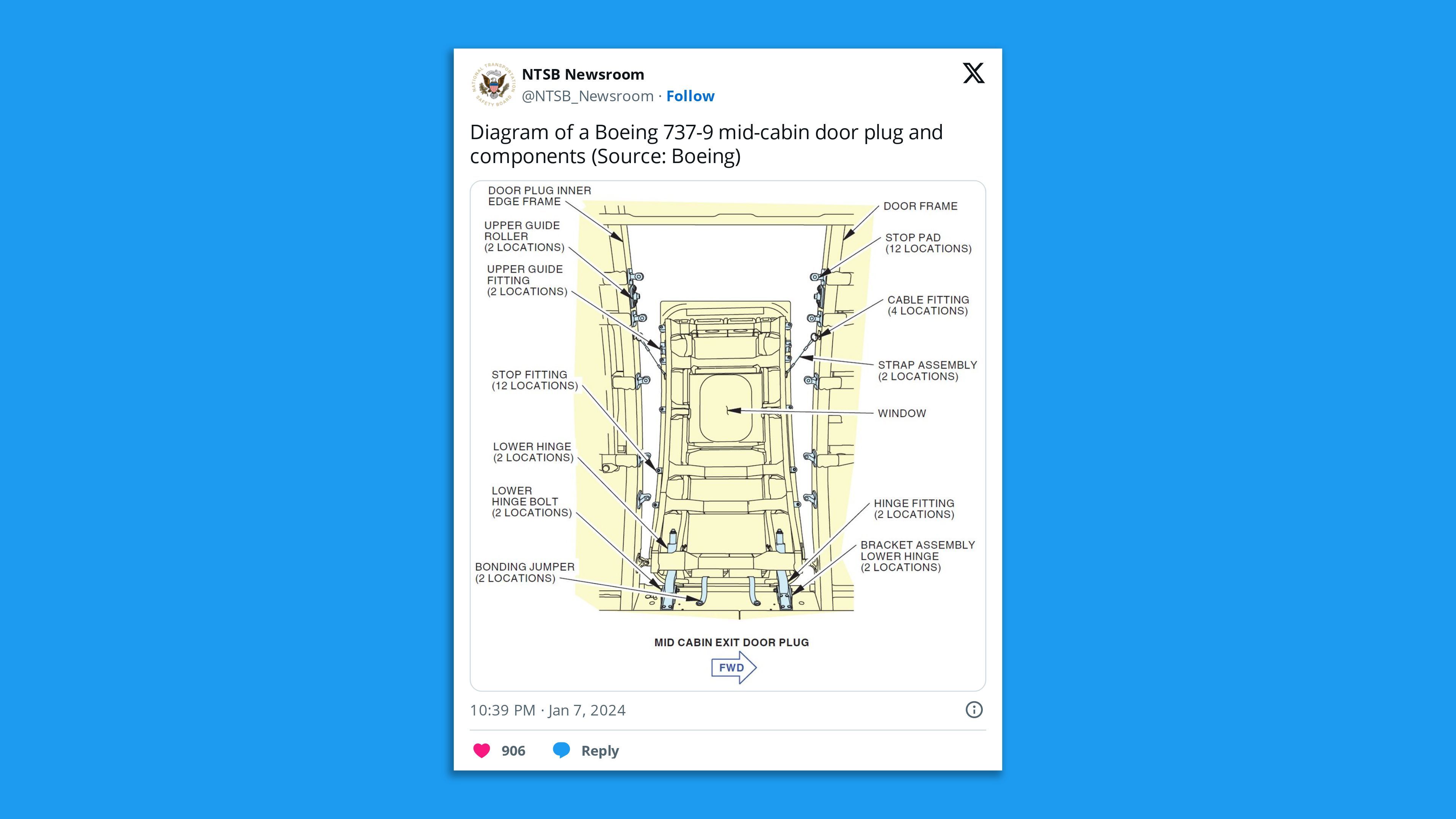Alaska and United Airlines find loose hardware on some Boeing 737 MAX 9s after grounding

Alaska and United Airlines said Monday they found problems with loose hardware following the grounding of all their Boeing 737 MAX 9 jets due to last week's mid-flight door plug blowout.
The big picture: Boeing and the Federal Aviation Administration (FAA) gave airlines authorization on Monday to begin inspections of 737 MAX 9 planes after they were grounded following the Friday incident aboard an Alaska Airlines plane.
- The FAA said on Monday that all 171 737 MAX 9 jets worldwide would remain grounded until operators inspected the vehicles' left and right cabin door exit plugs, door components and fasteners.
Why it matters: It's the latest problem to hit Boeing and the 737 MAX, which were previously grounded following crashes in Indonesia and Ethiopia that killed a total of 346 people.
- The FAA cleared 737 MAX planes for flight in the U.S. in November 2020, though the fallout from the crashes brought about the resignation of top Boeing executives, a criminal investigation and a massive financial hit for the company.
- It wasn't immediately clear what caused the exit door plug to suddenly detach on Friday, but it followed an earlier issue with 737s that saw Boeing advise airlines last month to inspect the jets for potential loose hardware in the planes' rudder control systems.
State of play: United Airlines said earlier on Monday that it found loose bolts on the door plugs of several of these jets during inspections. Alaska Airlines announced Monday night that "reports from our technicians indicate some loose hardware was visible on some aircraft."
- Both airlines have canceled hundreds of flights due to the grounding.
Meanwhile, the door plug that detached from the Alaska Airlines plane that's become the focus of a federal investigation was found in a backyard by a schoolteacher identified as "Bob" in Portland, Oregon, National Transportation Safety Board chair Jennifer Homendy said at a Sunday night briefing.

Zoom in: Before the blowout, Alaska Airlines restricted the plane from long flights over water because of a warning light indicating a pressurization fail. The light had illuminated during three prior flights, including twice in the days leading up to the incident, Homendy said.
- Alaska Airlines had the plane tested by maintenance, but no issues were found, she said. Investigators have not determined a correlation between the fail light and the blowout, she added.
- Boeing said in an emailed statement Sunday that it was "continuing to work with the FAA to clarify the inspection process and requirements for returning all MAX 9 aircraft to service."
- It was working to help re-accommodate customers on other flights and, in some cases, "avoid cancellations by switching to other aircraft types," the aircraft maker added.
What we're watching: Homendy told NBC News Sunday that investigators "will be looking at the entire chain of the events, from production to putting this plug in service to what happened to the history of this particular aircraft in flight and in service from the start to where we are today."
- The next step for carrying out the FAA's Emergency Airworthiness Directive in response to last Friday's mid-air incident is for Boeing to issue a "Multi-Operator Message," the company said.
- "The FAA will use this message to determine the final means of compliance with its Airworthiness Directive," Boeing said.
- "We've begun steps such as removing the inner panel to access the emergency door, and begun preliminary inspections while awaiting final instructions," it added.
- "Inspections can be completed after final procedures are received from the FAA."
Flashback: Boeing's one-two punch
Editor's note: This article has been updated with new details throughout and a new photo.